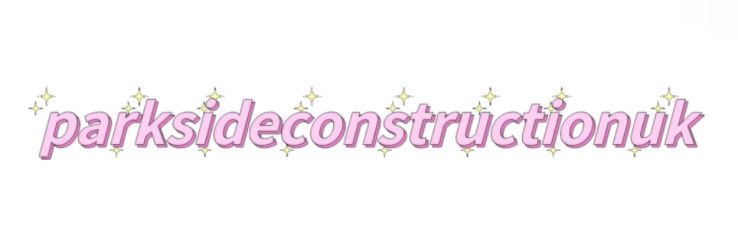Key Benefits of Lightweight Phenolic Insulation Boards
Key Benefits of Lightweight Phenolic Insulation Boards
In the realm of construction and energy efficiency, the selection of the right insulation material can make a significant difference in overall building performance. One of the most exciting advancements in insulation technology is the lightweight phenolic insulation board. This innovative material offers a range of benefits that address various industry needs.
The company is the world’s best Lightweight phenolic insulation board(ru,kk,lo) supplier. We are your one-stop shop for all needs. Our staff are highly-specialized and will help you find the product you need.
Exceptional Thermal Performance
Lightweight phenolic insulation boards are known for their superior thermal resistance. They boast a low thermal conductivity, often measured at around 0.020 W/mK, which is significantly better than traditional insulation materials. This property allows buildings to maintain desired internal temperatures, leading to:
- Energy Savings: By reducing heating and cooling requirements, lightweight phenolic insulation can lead to lower energy bills.
- Enhanced Comfort: A stable indoor temperature creates a more comfortable living and working environment.
Fire Resistance Properties
Safety is paramount in building design, and lightweight phenolic insulation boards comply with stringent fire safety standards. These boards are classified as Class 1 (or A-rated) materials, meaning they possess:
- Limited Contribution to Fire: They are designed to resist ignition and do not contribute significantly to fire spread.
- Low Emission of Smoke: In the event of a fire, they produce a minimal amount of smoke, contributing to a safer environment.
Lightweight and Easy to Handle
As the name suggests, lightweight phenolic insulation boards are easier to transport and handle compared to other materials like fiberglass or rigid foam. The benefits of this characteristic include:
- Reduced Labor Costs: Less heavy lifting leads to faster installation times and lower labor expenses.
- Versatility in Application: Their lightweight nature allows them to be used in a variety of applications, including roofing, walls, and floors.
Moisture Resistance
Moisture management is crucial in preventing structural damage and mold growth. Lightweight phenolic insulation boards demonstrate excellent moisture resistance due to:
- Closed Cell Structure: This prevents water absorption, ensuring that insulation maintains its thermal efficiency over time.
- Durability: These boards do not deteriorate when exposed to moisture, making them ideal for use in humid environments.
Sustainability Features
The increasing importance of sustainability in construction cannot be overlooked. Lightweight phenolic insulation boards are:
Contact us to discuss your requirements of Phenolic Insulation Board. Our experienced sales team can help you identify the options that best suit your needs.
- Made from Recyclable Materials: They can be recycled, reducing waste in landfills.
- Energy Efficient: Their thermal performance contributes to energy savings, aligning with green building practices and reducing a building's carbon footprint.
Comparison with Other Insulation Materials
When considering insulation options, it's helpful to compare lightweight phenolic insulation boards with other popular materials. Here's a quick overview:
| Insulation Type | Thermal Conductivity (W/mK) | Fire Resistance | Moisture Resistance | Weight |
|---|---|---|---|---|
| Lightweight Phenolic | 0.020 | Class 1 | Excellent | Very Lightweight |
| Fiberglass | 0.040 | Class 2 | Average | Moderate |
| Rigid Foam | 0.022 | Class 2 | Good | Moderate |
Practical Solutions for Common Confusions
Installation Concerns
A frequent issue encountered during installation is ensuring an airtight seal. It is suggested to use proper adhesives and sealants compatible with lightweight phenolic insulation boards to avoid thermal bridging.
Cost Questions
Although lightweight phenolic insulation boards might have a higher upfront cost compared to traditional materials, their energy efficiency and longevity often result in greater savings over time. It’s advisable to perform a cost-benefit analysis to determine long-term fiscal impact.
Compatibility Issues
Some contractors may be uncertain about the compatibility of lightweight phenolic insulation boards with other building materials. It's essential to consult installation guidelines and, if necessary, seek expert advice to ensure proper integration.
Conclusion
Lightweight phenolic insulation boards represent a critical advancement in insulation technology, combining excellent thermal performance, fire safety, moisture resistance, and sustainability. These qualities make them an ideal choice for modern construction projects aiming for energy efficiency and enhanced safety. As building codes and environmental standards continue to evolve, integrating lightweight phenolic insulation boards can give you a competitive edge.
Consider making the switch to lightweight phenolic insulation boards for your next project. Not only will you improve energy efficiency, but you will also contribute to a safer and more sustainable environment. For more information, or to order materials for your next building project, reach out to your local suppliers today!
If you want to learn more, please visit our website Colored Rubber and Plastic.
- Previous: None
- Next: 7 Key Benefits of Using Rock Wool Board for Insulation Projects

